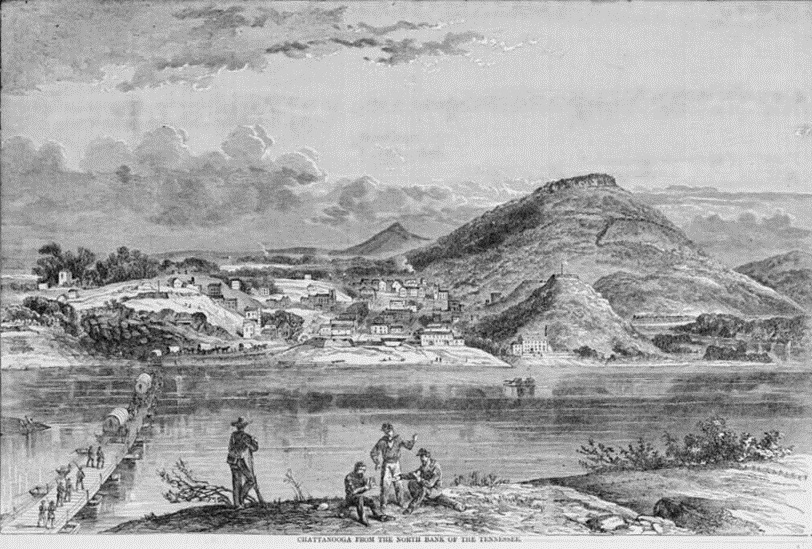Following their stunning success Hoover’s Gap, Salathiel Timmons and Wilder’s Brigade spent the next three weeks going after the rear of Confederate General Bragg’s army, burning railroads and bridges, capturing horses, and raiding for supplies.
The Adjutant General’s report then describes at great length what was really just a minor skirmish but again displays the new ways in which a mounted brigade was useful to the overall war effort.
Union General Rosecrans knew that Chattanooga, Tennessee was an important resource for the Confederate war effort, and he needed to cut it off and then occupy it. The city was an important rail hub and a vital part of the Confederates’ coal supply system. The Union needed to conquer Chattanooga before they could move on to attack Atlanta.
Rosecrans asked Wilder’s Brigade to create a diversion so that he could start moving his Army across the river into Chattanooga. Wilder ordered two companies from the Illinois 123rd down the valley to create the diversion. There is no record as to which two out of the ten companies got the orders, so we don’t know for sure whether Salathiel was involved. Anyway, the two companies came up on a steamboat anchored at the bank of the river. The boat had just unloaded 60 mules and some rebel soldiers. The soldiers and sailors were so stunned and surprised by the attack, the steamboat ended up adrift in the river and had to be rescued by some of Wilder’s men, belly-deep in the river on their horses. The shooting and commotion came as a great shock to the townspeople, who had no idea there were Union soldiers within 100 miles of their city. The two companies fired at will for 10 minutes before anyone in Chattanooga was able to get off a single shot. Soon the rest of the brigade, including Eli Lilly’s artillery unit, joined the battle and fired shells throughout the city.
General Rosecrans was once again delighted with the performance of Wilder’s Brigade, and noted
“I respectfully call attention to the facts that he was able to attract almost two divisions of rebels to that part of the river, and that for thirty days some of his command were daily skirmishing with the enemy while our troops crossed below.”

The Brigade stayed in Chattanooga until September 9, when they started more frequent and heavy engagements with Confederate forces. Rosecrans wasn’t sure about enemy positions, and he had unknowingly spread his forces to thin. It all culminated in the Battle of Chickamauga on September 19-20, 1863.
The month of September, 1863 was a life-changing one for Salathiel. Besides fighting in the Battle of Chickamauga (which I’ll talk about next time), he also contracted a rather severe case of typhoid. He would live with its repercussions for the rest of his life.
